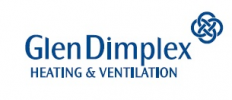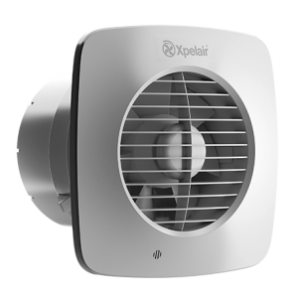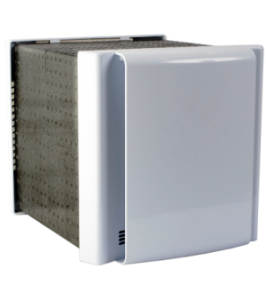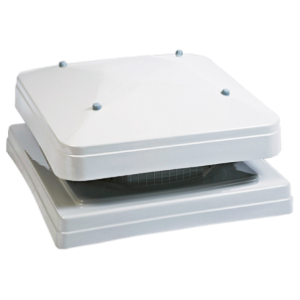GDHV VENTILATION - GLEN DIMPLEX HEATING & VENTILAT
Suppliers of: Whole House Heat Recovery and Ventilation Systems, Domestic Ventilation extractor fans whole house ventilation roof fans commercial fans industrial fans coaxial fans
Glen Dimplex Heating & Ventilation - GDHV Ventilation
Our goal at Glen Dimplex Heating & Ventilation is to deliver market-defining heating, cooling and ventilation solutions.These solutions cover a range of technologies, that make best use of our decarbonising grid and focus on a lowcarbon future. We are the world’s largest electric heating manufacturer and are well equipped to help guide you through your projects and highlight the benefits these new innovations can deliver.
Residential and Commercial Expertise:
With commitment to innovation and a focus on tailored specification, we are proud to provide heating, cooling and ventilation solutions manufactured to the highest standards for both commercial and residential projects. We have extensive experience across multiple industry sectors and can offer solutions that include low temperature networks, mechanical ventilation systems and a variety of heat pump technology and water cylinders.
------------------------------------------------------------------------------------------------------------------------------------
GDHV Ventilation:
GDHV offer a wide range of heating, cooling and ventilation solutions for all types of projects. We can provide product application support through our team of in-house design & engineering experts. Our range of CPDs provide product know-how and enable you to specifiy with confidence.
Our range of Heating Solutions include:
Zeroth Energy System:
The Zeroth Energy System provides heating, cooling and hot water services to residential or commercial spaces using a network of water-water heat pumps. The heat pumps are connected to an energy loop, which is a water circuit maintained at between 15⁰C and 25⁰C.
BREEAM & Heat Pumps:
As specification moves away from traditional fossil fuel heating systems, GDHV offer a range of Heat Pumps which can provide clean and cheap energy for all types of projects. In addition to the technical application of heat pumps, there are often benefits available like grants and funding to incentivise the use of heat pump technology. We have the expertise to support you from a technical perspective, giving you viable solutions for your project.
Fan Coil Units:
Fan Coil Units (FCUs) enable designers to create the most flexible terminal unit systems, providing close control of both heating and cooling. Suitable for offices, commercial spaces and residential projects, FCUs can meet and exceed the requirements of the strictest building energy standards. Our range of EVO, Matrix and Multiroom solutions can deliver benefit to your projects and help meet your energy requirements.
Air Curtains:
Air curtains can contribute significantly to lower running costs, greater energy efficiency and a more comfortable environment in commercial settings. By fitting an air curtain over frequently opening entrances, whole building heating costs can be reduced by up to 30% as a result of less heat escaping the building.
Residential Heating Solutions:
GDHV supply a wide range of solutions for all types of residential contruction. From Electric Panel heaters and fan-assisted hydronic radiators to bathroom heaters and towel rails, Electric & gas fires to whole house heating and hot water systems; GDHV can provide technical advice and support throughout your project design & build.
-------------------------------------------------------------------------------------------------------------------------------------------
Our Brands:
Operating at the forefront of current developments in heating, cooling, hot water and ventilation, our collective portfolio features many ofthe best-known industry brands, including Ability, Dimplex, and Xpelair, alongside Burco, Creda, Faber Nobo, Redring, and Valor.
Ability Projects: visit website
Specialising in the design and manufacture of UK specification fan coil units for global applications.
Burco Instant Boiling Water: visit website
Burco is a well-known and trusted brand within the leisure and catering sectors. Offering a complete range of water boiling and handwash products suitable to address a wide variety of applications.
Creda Heating: visit website
Creda is renowned for providing economical, effective and environmentally friendly electric heating solutions to suit any business or domestic requirement.
Dimplex Heating: visit website
From intelligent electric heating for the whole home to our 3D flame effect fires, through to cooling fans and air purification, Dimplex has the answer to make your home the cosy, comfortable place it should be.
Faber Gas Fires: visit website
Faber is a creator of versatile, aspirational gas fires, solid fuel and electric stoves for premium residential and commercial projects.
Nobo Heating Controls: visit website
Nobo sets the standard for electrical heating with highly accurate thermostats and optional control via smartphone or tablet.
Redring Water Heating: visit website
Redring creates electric, power, digital and mixer showers, vented and unvented water storage heaters, instantaneous water heaters, beverage water boilers, boiling water taps and hand dryers.
Valor Gas Fires: visit website
Valor remains the pioneer within the electric and gas fire market, with one of the largest gas fire portfolios in the UK.
Xpelair Ventilation: visit website
Xpelair is the market leader in the manufacturing and development of sustainable, eco-friendly ventilation products.
Zeroth Energy System: visit website
The Zeroth Energy System provides heating, cooling and hot water services to residential or commercial spaces using a network of water-water heat pumps. The heat pumps are connected to an energy loop, which is a water circuit maintained at between 15⁰C and 25⁰C.
Further Technical information can be viewed from the BPi download library or from the Manufacturer’s own website.
The Part L update 2019: Building compliance with primary energy
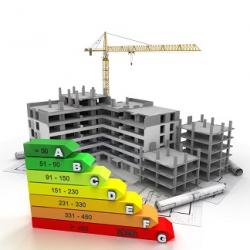 The upcoming Part L and Part F updates are likely to change the way new developments achieve compliance, as primary energy becomes the key metric for energy performance targets. This change could heavily impact heating, ventilation and air conditioning (HVAC) specification and building design. This is why we have created our new reports:
The upcoming Part L and Part F updates are likely to change the way new developments achieve compliance, as primary energy becomes the key metric for energy performance targets. This change could heavily impact heating, ventilation and air conditioning (HVAC) specification and building design. This is why we have created our new reports:
Staying on target – Combining nearly zero energy buildings and low carbon HVAC solutions
Nearly zero energy building - Primary energy compliance and our low carbon future
Towards the end of 2018, the Government announced that there would be an update to Part L and Part F of the Building Regulations before the end of 2019.
This date was not picked by chance.
The European Union’s (EU) Energy Performance of Buildings Directive (EPBD) (which the UK must comply with regardless of our potential exit from the EU) sets a target for all new developments to be nearly zero energy buildings (NZEBs) by the 31st December 2020.
Achieving NZEBs in the UK is becoming a realistic target for new developments, as recent updates to regulations have significantly progressed the extent to which the NZEB criteria are addressed, moving new buildings towards energy efficient, lower carbon technologies.
The challenge in compliance comes not from the availability of technology to specify, but from the EU’s preferred measurement of this achievement: Primary energy.
What does Primary Energy mean for Building Compliance?
New developments in the UK currently achieve compliance through meeting carbon emission targets, which is helping towards the achievement of the Carbon Budgets.
However, with NZEBs being measured in primary energy this will need to change, and the inclusion of a new metric for Energy Performance Targets will be used to assess a building’s total primary energy use.
Primary energy may not be the only metric applied in future UK regulations, with the potential for other indicators to sit alongside it and with the EU’s eagerness for member states to have their own renewable energy strategy (RES) as per the NZEB definition.
However, even if factors such as carbon emissions and a RES are introduced to smooth the transition, there will be a significant change in the specification approach for HVAC solutions and related elements of building design.
Primary Energy and HVAC specification: A study
In the UK, Glen Dimplex Heating & Ventilation has a dedicated team focused on understanding the potential impact that future changes could have on the specification of HVAC solutions across the built environment.
By utilising the draft SAP 10 methodology and software, we have created a desktop study on how a compliance system based on primary energy could impact HVAC specification when compared with the current carbon emissions focused approach.
Combining these results with environmental targets, Government strategies and with consideration of key industry issues, we have started to consider how the industry can practically move towards our NZEB future without regressing any of the hard-earned progress already made under the carbon emissions-focussed phase of our journey towards sustainability: Staying on target: Combining nearly zero energy buildings and low carbon HVAC solutions.
This report is available for download and we will be holding seminar events in London in September to discuss the topics contained, alongside other key industry updates and information.
Glen Dimplex - Reinstating flame
 There’s no disputing the power of flame. It’s striking, eye-catching and enticing. But using flame as a design element and incorporating it into some spaces can come with challenges around health and safety, cost and building regulations, to name a few.
There’s no disputing the power of flame. It’s striking, eye-catching and enticing. But using flame as a design element and incorporating it into some spaces can come with challenges around health and safety, cost and building regulations, to name a few.
If you want to restore, change, or make a fireplace operational once again, then heritage sites have more challenges than most. Before the middle of the 20th century almost all rooms were heated by open fires. They can be an integral part of the history of the room and add to its authenticity. However, with potentially blocked flues, damaged chimneys and unusable grates, it can be difficult to reinstate the fireplace to its former glory and meet all the safety and building regulation requirements.
One way to overcome these challenges is to use electric flame technology. It provides the same authentic experience as real flame; a sense of warmth, comfort and belonging - adding ambience to a space and making people feel welcome. Developed to mimic real flame, these electric fires can be used in a variety of ways and offer much more flexibility than traditional fires.
In addition to the flexibility of electric fire installations, there are also other benefits. There is no requirement for a chimney or flue, the product is safe because it’s cool to the touch and the technology is energy efficient and low maintenance, leading to low running costs. Also, with no real embers there is no risk of a fire starting.
One example of flame technology in action is in the Royal Receiving Room at the Theatre Royal Haymarket. Constructed in 1720, the theatre is famed for its interior and is decorated in a Louis XVI style. The dated fireplace was in need of a refresh but most importantly, it needed to be done in keeping with the décor of the room.
The theatre used Glen Dimplex Heating & Ventilation’s Opti-myst flame technology to provide not only a realistic three-dimensional flame effect, but a smoke effect as well. Glen Dimplex Heating & Ventilation added a realistic log bed and the real fireplace effect was complete.
Electric fires provide all the same effects as real flame. Flame technology can be used to bring back atmosphere and authenticity to your heritage project. The barriers to flame no longer exist.
www.gdhv.com

